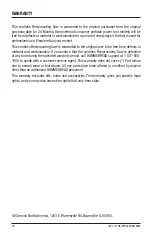
14
20V 7/8" RECIPROCATING SAW
OPERATING INSTRUCTIONS
i. Depress the Lock-off button and hold it in place, Squeeze the variable-speed trigger
switch to start the saw and bring it to the maximum desired cutting speed before
applying the blade to the workpiece.
j. Place the shoe firmly on the workpiece while cutting. Use only enough steady
pressure on the blade to keep the saw cutting. Do not force the tool.
k. Reduce pressure as the blade comes to the end of the cut.
l. Allow the saw to come to a complete stop before removing the blade from the
workpiece.
NOTICE:
When sawing fiberglass, plaster, wallboard, or spackling compound, clean the
motor vents frequently with a vacuum or with compressed air. These materials are highly
abrasive and may accelerate the wear on motor bearings and brushes.
WARNING:
Always wear safety goggles or safety glasses with side shields during
power tool operation or when blowing dust. If operation is dusty, also wear a dust mask.
WARNING:
Do not allow familiarity with the saw to make you careless. One careless
fraction of a second is enough to inflict serious injury.
7. Plunge Cuttingg
Your reciprocating saw is ideal for plunge cutting directly into surfaces that cannot be cut
from an edge, such as in walls or floors. Plunge cutting may be done two ways, depending
on how the blade is inserted.
Figure 7a shows how to plunge cut with the teeth of the blade facing down.
Figure 7b shows how to plunge cut with the teeth of the blade facing up.
7a
7b




















